Changes of daily precipitation extremes in the Himalayan range within China, 1978-2016
DOI: 10.23977/geors.2021.040104 | Downloads: 12 | Views: 2029
Author(s)
Jun Li 1, Yuandi Zhao 1
Affiliation(s)
1 School of Civil Engineering, Sichuan University of Science & Engineering, Zigong 643000, China
Corresponding Author
Jun LiABSTRACT
The temporal and spatial changes of trends for extreme precipitation indices were analyzed on account of precipitation records at 9 meteorological stations in Himalayan range within China from 1978 to 2016. The results contain three parts. Firstly, the temporal and spatial changes of trends for precipitation extreme indices are irregular in Himalayan range with China. For regional pattern, only the consecutive dry days (CDD) has a statistically significant increasing trend of 3.17 days/decade over Himalayan range within China. Most of the other indices have statistically significant decreasing trends except CWD and SDII. The regionally averaged consecutive wet day (CWD) is stationary. The regionally averaged simple daily intensity index (SDII) is slightly increasing trend. For individual stations, many stationary trends are observed in heavy, very heavy and extremely heavy precipitation days (R10, R20 and R25). Most of the precipitations on very wet days (R95) have decreasing trends, but they are not statistically significant. Most of the precipitations on extremely wet days (R99) have stationary trends. Increasing and decreasing trends are observed in RX1day, RX5day, SDII and NW. The obvious trends of individual station are detected in PRCPTOT. Secondly, annual total precipitation and precipitation extremes indices have significant correlations based on the methods of Pearson's correlation and two-tailed t-test, except consecutive dry days (CDD). Thirdly, the South Asia Summer Monsoon evolution influence the trend changes of most precipitation extreme indices in the Himalayan range within China.
KEYWORDS
Precipitation extremes, Temporal and spatial change, Himalayan range within China, South Asia Summer MonsoonCITE THIS PAPER
Jun Li, Yuandi Zhao. Changes of daily precipitation extremes in the Himalayan range within China, 1978-2016. Geoscience and Remote Sensing (2021) Vol. 4: 25-40. DOI: http://dx.doi.org/10.23977/geors.2021.040104.
REFERENCES
[1] Aggarwal, S., Rai, S.C., Thakur, P.K., Emmer, A., 2017. Inventory and recently increasing GLOF susceptibility of glacial lakes in Sikkim, Eastern Himalaya. Geomorphology 295, 39-54.
[2] Baidya, S.K., Shrestha, M.L., Sheikh, M.M., 2008. Trends in daily climatic extremes of temperature and precipitation in Nepal. J Hydrol Meterol 5, 38-51.
[3] Chen, N., Hu, G., Deng, W., Khanal, N.R., Zhu, Y., Han, D., 2012. Water Hazards in the Trans-boundary Kosi River Basin. Natural Hazards & Earth System Sciences 13, 795-808.
[4] Chen, X., Cui, P., Li, Y., Yang, Z., Qi, Y., 2007. Changes in glacial lakes and glaciers of post-1986 in the Poiqu River basin, Nyalam, Xizang (Tibet). Geomorphology 88, 298-311.
[5] Croitoru, A.E., Chiotoroiu, B.C., Todorova, V.I., Torică, V., 2013. Changes in precipitation extremes on the Black Sea Western Coast. Global & Planetary Change 102, 10-19.
[6] Delaney, K.B., Evans, S.G., 2015. The 2000 Yigong landslide (Tibetan Plateau), rockslide-dammed lake and outburst flood: Review, remote sensing analysis, and process modelling. Geomorphology 246, 377-393.
[7] Ding, L., Spicer, R.A., Yang, J., Xu, Q., Cai, F., Li, S., Lai, Q., Wang, H., Spicer, T.E.V., Yue, Y., Shukla, A., Srivastava, G., Khan, M.A., Bera, S., Mehrotra, R., 2017. Quantifying the rise of the Himalaya orogen and implications for the South Asian monsoon. Geology 45, 215-218.
[8] El Kenawy, A., López-Moreno, J.I., Vicente-Serrano, S.M., 2011. Recent trends in daily temperature extremes over northeastern Spain (1960–2006). Natural Hazards and Earth System Science 11, 2583-2603.
[9] Hundecha, Y., Bárdossy, A., 2005. Trends in daily precipitation and temperature extremes across western Germany in the second half of the 20th century. International Journal of Climatology 25, 1189–1202.
[10] Li, Z., He, Y., Wang, C., Wang, X., Xin, H., Zhang, W., Cao, W., 2011. Spatial and temporal trends of temperature and precipitation during 1960–2008 at the Hengduan Mountains, China. Quaternary International 236, 127-142.
[11] Li, Z., He, Y., Wang, P., Theakstone, W.H., An, W., Wang, X., Lu, A., Zhang, W., Cao, W., 2012. Changes of daily climate extremes in southwestern China during 1961–2008. Global & Planetary Change s 80–81, 255-272.
[12] Lu, H., Du, J., Yuan, L., Liao, J., 2014. Variation characteristic of extreme precipitation events over Mt. Qomolangma region in China from 1971 to 2012. Journal of Glaciology and Geocryology 36, 563-572.
[13] Nagai, H., Ukita, J., Narama, C., Fujita, K., Sakai, A., Tadono, T., Yamanokuchi, T., Tomiyama, N., 2017. Evaluating the Scale and Potential of GLOF in the Bhutan Himalayas Using a Satellite-Based Integral Glacier–Glacial Lake Inventory. Geosciences 7, 77.
[14] Nie, Y., Sheng, Y., Liu, Q., Liu, L., Liu, S., Zhang, Y., Song, C., 2017. A regional-scale assessment of Himalayan glacial lake changes using satellite observations from 1990 to 2015. Remote Sensing of Environment 189, 1-13.
[15] Ning, B., Yang, X., Chang, L., 2012. Changes of temperature and precipitation extremes in Hengduan Mountains, Qinghai-Tibet Plateau in 1961–2008. Chinese Geographical Science 22, 422-436.
[16] Rounce, D., Watson, C.S., Mckinney, D., 2017. Identification of Hazard and Risk for Glacial Lakes in the Nepal Himalaya Using Satellite Imagery from 2000–2015. Remote Sensing 9, 654.
[17] Salmi, T., Määttä, A., Anttila, P., Ruoho-Airola, T., Amnell, T., 2002. Detecting Trends of Annual Values of Atmospheric Pollutants by the Mann-Kendall Test and Sen's Solpe Estimates the Excel Template Application MAKESENS. Universitas Gadjah Mada 31, 1-35.
[18] Shang, Y., Yang, Z., Li, L., Liu, D.A., Liao, Q., Wang, Y., 2003. A super-large landslide in Tibet in 2000: background, occurrence, disaster, and origin. Geomorphology 54, 225-243.
[19] Sigdel, M., Ma, Y., 2016. Variability and trends in daily precipitation extremes on the northern and southern slopes of the central Himalaya. Theoretical and Applied Climatology 130, 571-581.
[20] Tian, L., Yao, T., Gao, Y., Thompson, L., Mosley-Thompson, E., Muhammad, S., Zong, J., Wang, C., Jin, S., Li, Z., 2016. Two glaciers collapse in western Tibet. Journal of Glaciology 63, 194-197.
[21] Vincent, L.A., Aguilar, E., Saindou, M., Hassane, A.F., Jumaux, G., Roy, D., Booneeady, P., Virasami, R., Randriamarolaza, L.Y.A., Faniriantsoa, F.R., Amelie, V., Seeward, H., Montfraix, B., 2011. Observed trends in indices of daily and extreme temperature and precipitation for the countries of the western Indian Ocean, 1961–2008. Journal of Geophysical Research 116, D10108.
[22] Wang, S., Zhang, M., Wang, B., Sun, M., Li, X., 2013. Recent changes in daily extremes of temperature and precipitation over the western Tibetan Plateau, 1973–2011. Quaternary International 313-314, 110-117.
[23] Wang, W., Gao, Y., Anacona, P.I., Lei, Y., Xiang, Y., Zhang, G., Li, S., Lu, A., 2015. Integrated hazard assessment of Cirenmaco glacial lake in Zhangzangbo valley, Central Himalayas. Geomorphology.
[24] Yin, A., 2006. Cenozoic tectonic evolution of the Himalayan orogen as constrained by along-strike variation of structural geometry, exhumation history, and foreland sedimentation. Earth-Science Reviews 76, 1-131.
[25] Zhang, J.-Y., Yin, A., Liu, W.-C., Ding, L., Xu, X.-M., 2016. First geomorphological and sedimentological evidence for the combined tectonic and climate control on Quaternary Yarlung river diversion in the eastern Himalaya. Lithosphere 8, 293-316.
[26] Zhang, J., Shen, X., Wang, B., 2015. Changes in precipitation extremes in Southeastern Tibet, China. Quaternary International 380-381, 49-59.
[27] Zhang, K., Pan, S., Cao, L., Wang, Y., Zhao, Y., Zhang, W., 2014. Spatial distribution and temporal trends in precipitation extremes over the Hengduan Mountains region, China, from 1961 to 2012. Quaternary International 349, 346-356.
[28] Zhang, M., Chen, Y., Shen, Y., Li, Y., 2017. Changes of precipitation extremes in arid Central Asia. Quaternary International 436, 16-27.
[29] Zhang, X., Alexander, L., Hegerl, G.C., Jones, P., Tank, A.K., Peterson, T.C., Trewin, B., Zwiers, F.W., 2011. Indices for monitoring changes in extremes based on daily temperature and precipitation data. Wiley Interdisciplinary Reviews Climate Change 2, 851–870.
[30] Zhou, J.W., Cui, P., Hao, M.H., 2016. Comprehensive analyses of the initiation and entrainment processes of the 2000 Yigong catastrophic landslide in Tibet, China. Landslides 13, 39-54.
[31] Zhou, L., Zhu, J., Zou, H., Ma, S., Li, P., Zhang, Y., Huo, C., 2013. Atmospheric moisture distribution and transport over the Tibetan Plateau and the impacts of the South Asian summer monsoon. Acta Meteor. Sinica 27, 819-831.
| Downloads: | 1063 |
|---|---|
| Visits: | 109932 |
Sponsors, Associates, and Links
-
International Journal of Geological Resources and Geological Engineering
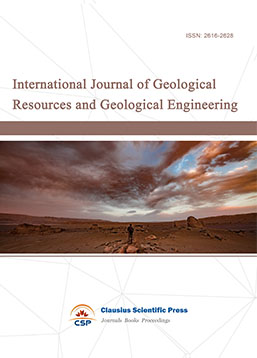
-
Big Geospatial Data and Data Science

-
Solid Earth and Space Physics

-
Environment and Climate Protection
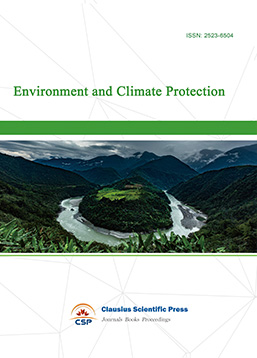
-
Journal of Cartography and Geographic Information Systems

-
Environment, Resource and Ecology Journal
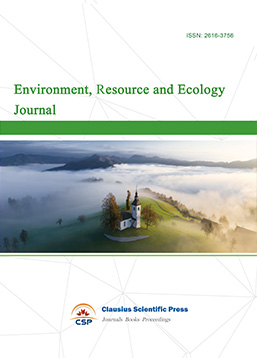
-
Offshore and Polar Engineering

-
Physical and Human Geography
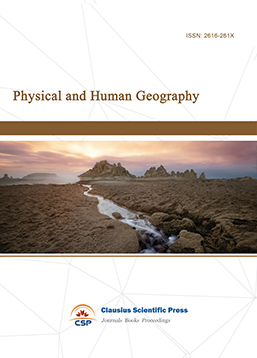
-
Journal of Atmospheric Physics and Atmospheric Environment
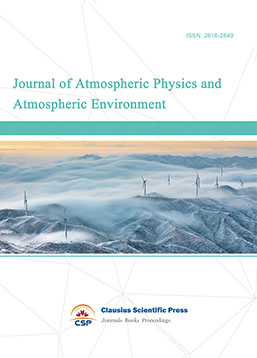
-
Trends in Meteorology

-
Journal of Coastal Engineering Research
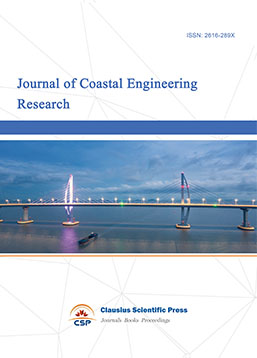
-
Focus on Plant Protection
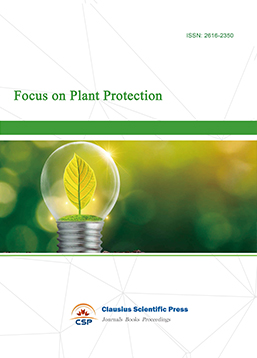
-
Toxicology and Health of Environment
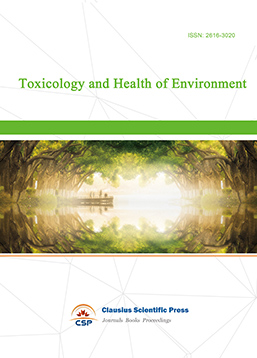
-
Advances in Physical Oceanography

-
Biology, Chemistry, and Geology in Marine
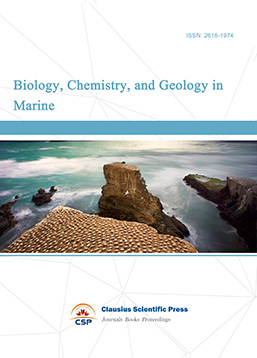
-
Water-Soil, Biological Environment and Energy

-
Geodesy and Geophysics

-
Journal of Structural and Quaternary Geology
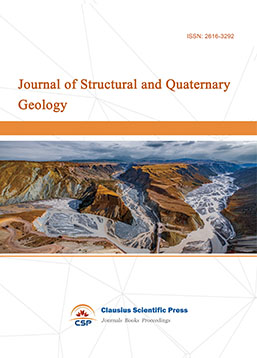
-
Journal of Sedimentary Geology

-
International Journal of Polar Social Research and Review


 Download as PDF
Download as PDF